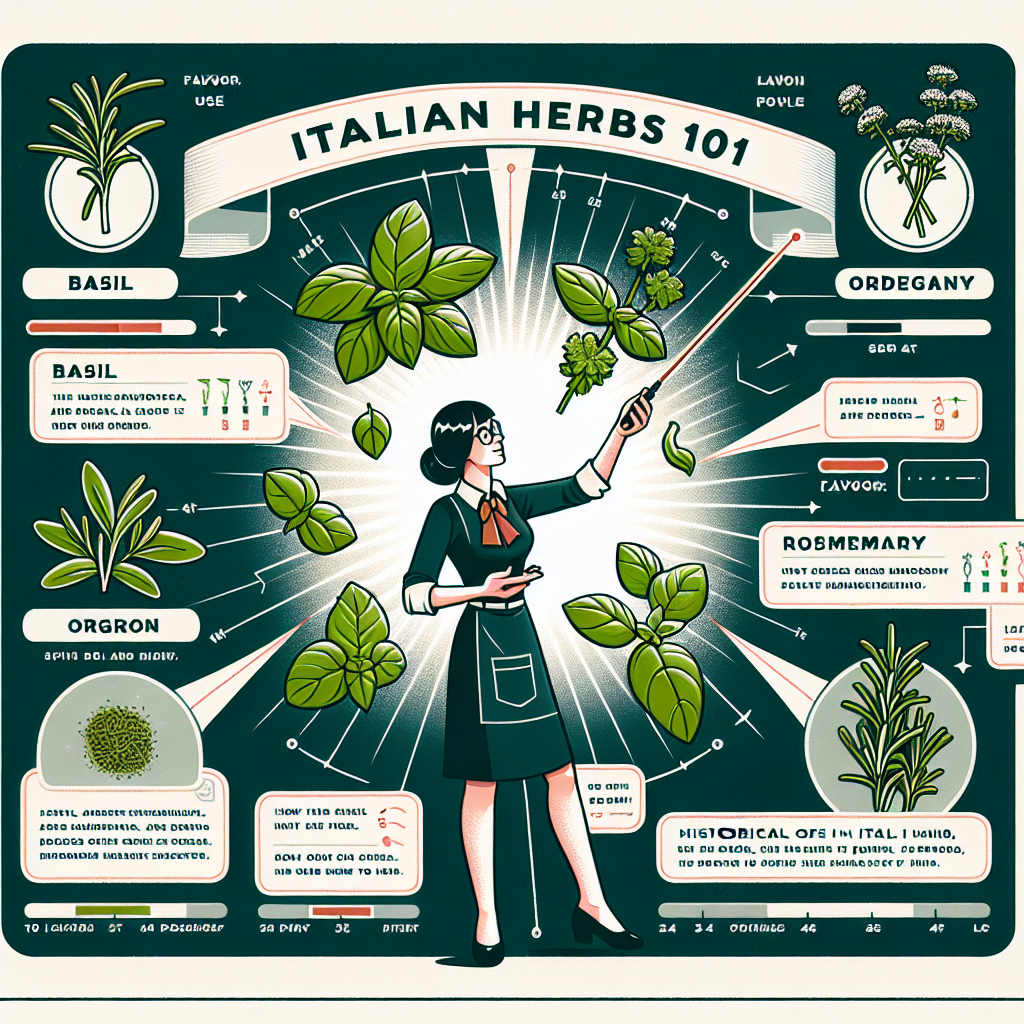“`html
Italian Herbs 101: How Basil, Oregano, and Rosemary Define Flavor
Introduction
Italian cuisine is renowned worldwide for its rich flavors, and much of this distinct taste comes from the masterful use of herbs. Among the array of green treasures, basil, oregano, and rosemary stand out as signature ingredients that shape the essence of Italy’s culinary identity. Understanding these herbs not only enhances your cooking but also connects you with centuries of tradition.
Why This Topic Matters
Incorporating authentic Italian herbs into your dishes transforms simple meals into unforgettable experiences. Whether you’re a home cook eager to explore Italian flavors or a food enthusiast seeking to understand regional nuances, mastering these herbs is crucial. They’re more than just seasonings; they are cultural symbols that carry history and bring depth to your dining table.
Benefits of Using Basil, Oregano, and Rosemary
- Enhance flavor complexity without overwhelming dishes
- Add health benefits, as many Italian herbs offer antioxidants and digestive aids
- Provide versatility, suitable for sauces, meats, breads, and more
- Elevate your cooking authenticity, impressing friends and family
The Role of Basil in Italian Cooking
Characteristics and Uses
Basil, especially Genovese basil, has a sweet, peppery aroma and is essential in Italian dishes like pesto and Caprese salad. It is often added at the end of cooking to preserve its delicate fragrance.
Example: Classic Pesto alla Genovese
Made from fresh basil leaves, pine nuts, garlic, Parmesan cheese, and olive oil, this sauce exemplifies how basil’s sweet freshness can drive flavor.
How to Use Basil Effectively
- Use fresh leaves for the best flavor
- Avoid cooking basil for too long; add it at the last minute
- Grow basil at home for continuous supply and freshness
Oregano: The Heart of Southern Italian Flavor
Flavor Profile and Culinary Application
Oregano has a robust, slightly bitter taste with earthy undertones, often associated with Southern Italian and Sicilian dishes. Unlike basil, oregano holds up well during cooking and is frequently used in tomato-based sauces, grilled meats, and pizzas.
Practical Tips
- Use dried oregano for cooking sauces and grilled dishes as it intensifies with heat
- Fresh oregano is less common but excellent when finely chopped into salads or dressings
Important Considerations
Beware of overpowering the dish; oregano is potent, so start with small amounts and adjust to taste.
Rosemary: The Woody Herb with Aromatic Power
Characteristics
Rosemary’s piney, resinous aroma adds a unique depth, perfect for roasting meats, potatoes, and hearty breads like focaccia. It’s a resilient herb that withstands long cooking times, releasing fragrant oils gradually.
How to Incorporate Rosemary
- Pair rosemary with lamb, chicken, or root vegetables
- Use sprigs whole during roasting for subtle infusion; chop finely for herb mixes
- Avoid overuse as rosemary’s strong flavor can dominate dishes
Additional Insights
Common Questions
Q: Can these herbs be substituted for each other?
A: Though related, their flavors are distinct; substituting will alter the dish’s profile significantly.
Q: Are dried herbs as flavorful as fresh?
A: Dried herbs are more concentrated but lose some brightness. Use fresh when possible for delicate dishes.
Helpful Tools and Resources
- Herb scissors or kitchen shears for clean cuts
- Small herb pots for indoor growing
- Italian recipe books focusing on herb use
- Online sources from Italian chefs and cooking schools
Summary
Basil, oregano, and rosemary are foundational herbs that bring authenticity and bold flavor to Italian cuisine. Knowing when and how to use each herb unlocks a deeper appreciation of Italy’s culinary artistry.
Final Advice
Start by experimenting with fresh basil in a Caprese salad, then move to oregano-rich tomato sauces and rosemary-infused roasts. Build your confidence step by step and embrace the sensory journey.
Ready to elevate your Italian cooking? Dive deeper into Italian culinary traditions, subscribe to our newsletter, or contact us for personalized cooking workshops tailored to your taste preferences. Buon appetito!
“`





